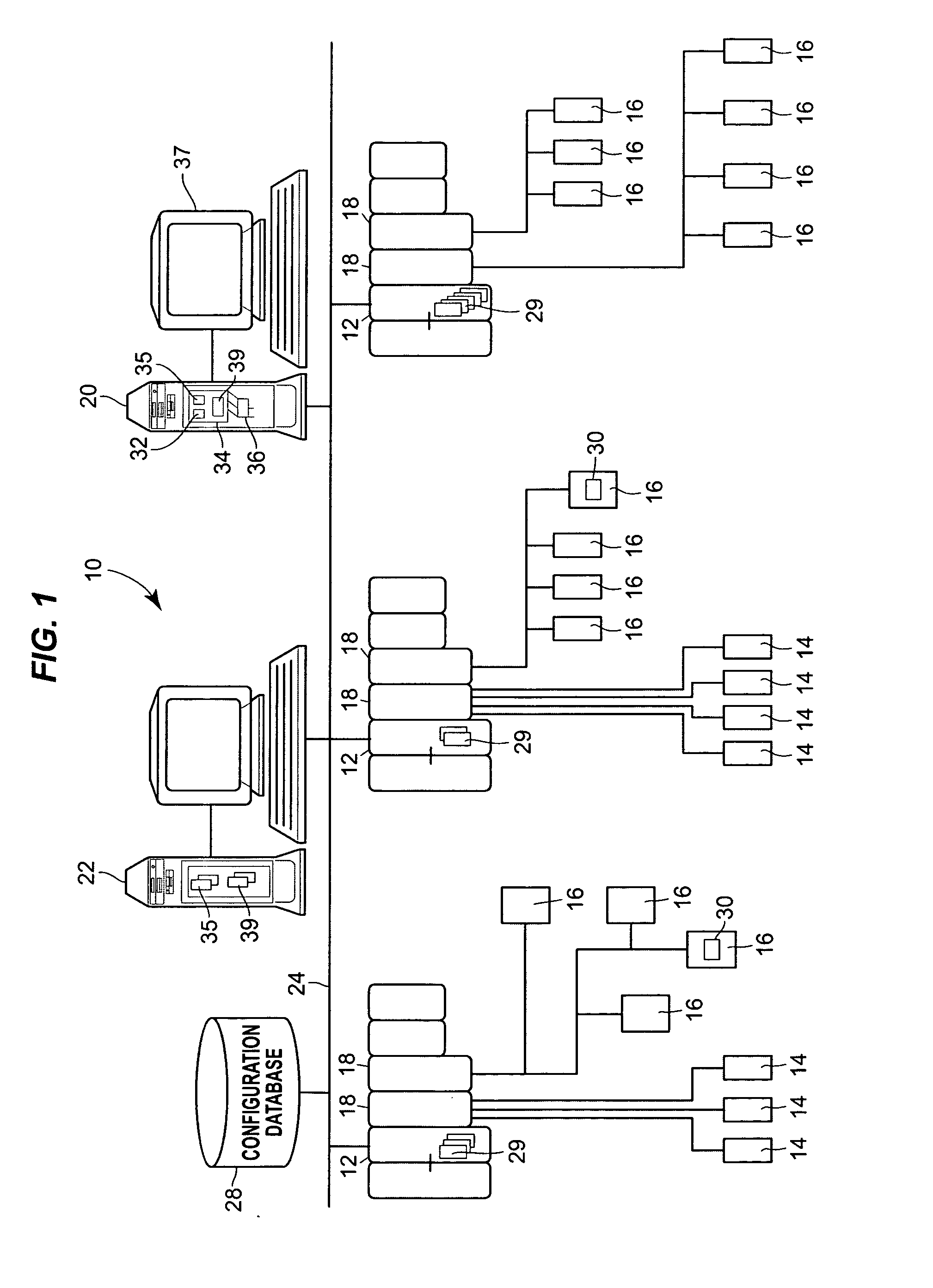Markup language-based, dynamic process graphics in a process plant user interface
a dynamic process and user interface technology, applied in the field of process plants, can solve the problems of limited usefulness to the specific process function, difficulty, if not impossible, to use the graphical program created to support the control operator in the maintenance, configuration or simulation function, and process is tedious, time-consuming and maybe fraught with errors
- Summary
- Abstract
- Description
- Claims
- Application Information
AI Technical Summary
Benefits of technology
Problems solved by technology
Method used
Image
Examples
Embodiment Construction
[0035] The process plant user interface system disclosed herein is generally configured and structured to present user information and content in support of the operation and maintenance of the process plant in a consistent and familiar form, and in an extensible and flexible manner. The content and information presented via the user interface is created, configured, stored and processed in a manner that enables broad, configurable and customizable access thereto. To these ends, and to address the above-described shortcomings and limitations of past process plant user interfaces, the user interface and its graphic structures (e.g., graphic display elements representative of process plant elements, as well as menu, panel, faceplate and other user interface structures), links to other documents or data sources, and any other embedded or composite shapes, are set forth, configured, and defined in a flexible and extensible format. The format may be defined by a declarative (or markup) l...
PUM
 Login to View More
Login to View More Abstract
Description
Claims
Application Information
 Login to View More
Login to View More - R&D
- Intellectual Property
- Life Sciences
- Materials
- Tech Scout
- Unparalleled Data Quality
- Higher Quality Content
- 60% Fewer Hallucinations
Browse by: Latest US Patents, China's latest patents, Technical Efficacy Thesaurus, Application Domain, Technology Topic, Popular Technical Reports.
© 2025 PatSnap. All rights reserved.Legal|Privacy policy|Modern Slavery Act Transparency Statement|Sitemap|About US| Contact US: help@patsnap.com



